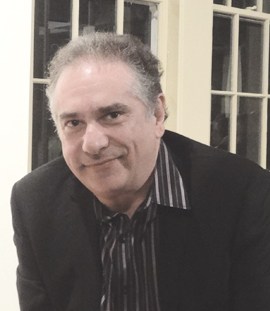It’s always been the view of this paper (and me) that the Columbia Street waterfront, the stretch of coastland between Brooklyn Bridge Park and the Red Hook Cruise Terminal should always remain a containerport. Actually, in addition to the shipping facility, it is also home to the beer distributor Manhattan Beverage and also the Waterfront Commission, a leftover from the old corrupt waterfront, and still today has to approve anyone working there.
It’s not a secret that the biggest real estate developers have been lusting over that land, especially following the resurgence of the Williamsburg coast over the last 25 years. The containerport, fully unionized, has kept them at bay. The land is owned by the Port Authority, which gives out five year leases which have been routinely renewed.
I am kind of sick and tired of hearing that we have an affordable housing shortage. One result of the creation of Mandatory Inclusionary Housing regulations, which enable builders to build bigger and denser housing as long as a certain portion of the new apartments are rented for $2000 or less, is that everything else become luxury. Wealthy people are always looking for places to park their money, and since everybody believes that real estate value is on a permanent upwards trajectory, apartments becomes part of portfolio, just like stock and bitcoins and gold. Which means that the more expensive the property, the better it is for the investment portfolio.
It makes me think that there are lots of apartments that barely get lived in. If I had unlimited time to devote to investigation, I’d do a study on electricity usage divided by number of apartments in each of the boroughs over the past 40 years.
However, everybody, especially young social justice seeking men and women do the work of the real estate industry by believing that we need more and more building.
But I’ll take the plunge and believe that everyone is right in saying that more building will allow everybody to live where they want to.
The time is probably right to finally move the container port to the marine terminal in Sunset Park. I’m not sure that’s still possible, since it will become a place for wind energy operations, but it’s possible there’s space for both.
One of the first news things I covered when I began the paper was a series of public meetings to envision a way to cover the BQE, in other words, to rejoin the Columbia Waterfront with Cobble Hill and Carroll Gardens. It was a study funded by a grant from Nydia Velazquez, and it taught me that you can have a study without much coming of it. But while the trench remains, the study does exist and perhaps it could be folded into a plan to bring housing to the waterfront.
Of course, I’m still happy having Red Hook the way it is – a mixed used neighborhood with industrial maritime use with a nice park in between. The one wildcard is the UPS site, which lays vacant, and equally alluring to developers. These days you can’t depend on your councilperson to protect the zoning that a neighborhood wants, as those same people who believe that building is social justice also believe that any one local councilperson shouldn’t have that kind of power in a neighborhood that voted them in. Elimination of member privilege, which is how that is called, has been a Republican driven real estate industry desire for decades. They now have the progressives on their side, which is somewhat related to the manufactured nimby/yimby war. In the old days, you were a nimby if you didn’t want something like a woman’s shelter in your neighborhood – now you are a nimby if you don’t want skyscrapers.
I don’t want skyscrapers in Red Hook, I think most readers of this paper cherish the small town feel that we have, and wouldn’t be in favor of a recent plan to put in a subway station to service waterfront condos. Those kind of money-driven plan doesn’t go away, and the giant UPS lot could become rezoned by the city.
In case that happens, I rescind my support for a move of the containerport. But if Red Hook maintains the residential/industrial/maritime nature, why not create a larger residential neighborhood next door.
I will say that I don’t think having a cruise terminal has done anything for Red Hook. If you’ve ever been past the gate, you will see there is a lot of land there. That would be a perfect place for a sports stadium, which could be used by schools, professional teams and things like concerts. Perhaps PioneerWorks could expand into a bigger concert business. That would bring a lot more to the neighborhood than an occasional ship, which mostly brings cabs to the area.
Back to the other side of Hamilton – the challenge would be as always in land use issues – how to give the real estate industry what it wants and add neighborhood amenities as the giveback. Those amenities would surely have to include a beautiful waterfront park, an expansion of the Brooklyn Greenway, and a basketball, soccer and volleyball fields a la Brooklyn Bridge Park.
Exchanging a cruise terminal and containerport for things that will make cyclists, affordable housing advocates, wealthy people looking for waterfront condos and/or investment vehicles happy seem like a good exchange.
In addition, this idea would give parents more beautiful and safe places to take their children and create more opportunities for athletes, sports fans and music lovers, Finally, the eyesore and neighborhood killer called the BQE trench would finally be dealt with for the public good.
Lots of winners, few losers. Sounds like an idea for a master plan.
Government, are you listening?
Author
-

George Fiala has worked in radio, newspapers and direct marketing his whole life, except for when he was a vendor at Shea Stadium, pizza and cheesesteak maker in Lancaster, PA, and an occasional comic book dealer. He studied English and drinking in college, international relations at the New School, and in his spare time plays drums and fixes pinball machines.
View all posts
George Fiala has worked in radio, newspapers and direct marketing his whole life, except for when he was a vendor at Shea Stadium, pizza and cheesesteak maker in Lancaster, PA, and an occasional comic book dealer. He studied English and drinking in college, international relations at the New School, and in his spare time plays drums and fixes pinball machines.










